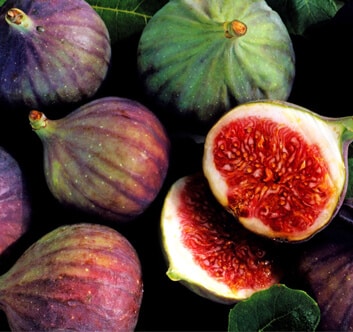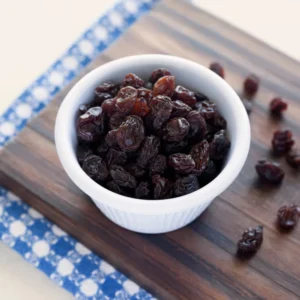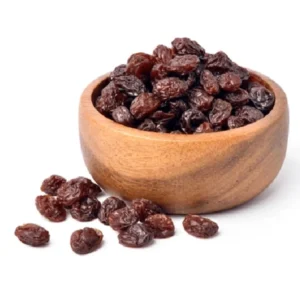
Figs and Dried Figs
Common fig, or simply and iranian dried fig, fig (Ficus carica L.) is one of the oldest cultivated plants. It has been an important plant in all religions and human civilizations and it can be claimed that figs have beheld the development of many civilizations. In the past, figs have been consumed instead of sugar in many sweets and desserts and are yet added to various types of cakes and desserts nowadays. Figs are rich in potassium, iron, fiber, and calcium and are occasionally used as laxatives and diuretics.
Types of figs
There are over 750 species of fig trees across the world. There are a variety of fig species available, but only a few particular varieties are supplying the main demand of the world food industry for fig fruits. The sharp differences between the varieties of figs emerge in exocarp (outer skin) color, flesh color, appearance, and size. Usually, figs vary from white to black. Plus, the flesh color varies from honey to plum purple. Figs are available in very small to large pear sizes. Despite the visible differences in appearance and external features, all species of figs are nearly the same in taste and flavor. In fact, they differ only in their sweetness.
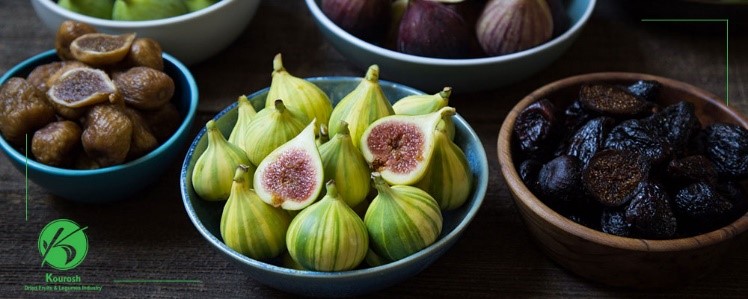
The popular species of figs
1.Black mission: This species has a very sweet taste and is suitable for making all kinds of desserts and tarts. It can be consumed with yogurt and different types of cheese. Contrary to public thinking, this species of fig is not black and is appeared in blue-purple. Black mission figs have dense pink flesh and abundant moisture. Given their pleasant sweetness, they are usually used in the production of dried figs.
2.Brown Turkey: This species of fig is known for elongated fruits (similar to pears) and dark purple-brown exocarp. Compared to other species of figs, it has a smaller flavor. Brown Turkey figs are quite similar in appearance to Black mission figs but have less sweetness. Brown Turkey figs can be used in salads and desserts containing added sweeteners. It is further deeply suitable for making fig bread and jam.
3.Calimyrna: This species of fig appears in golden green and is larger than other figs in size. The pink color of the flesh, as well as the stunning contrast it forms with its exocarp color, has made this species to be used often in sliced. Calimyrna figs are sweet and taste like nuts. They are usually used to make dried figs.
4.Kadota: Kadota is one of the well-known and oldest types of edible figs worldwide. Kadota figs appear in yellowish-green and have a light sweetness. For those who like the sweet and salty taste together, adding Kadota figs to the salad is the best option. If you want to improve the taste of figs, you need to pre-flavor them with sauce. Kadota figs can also be used to make jams.
5.Adriatic: This species of fig is available in light green and yellow colors. If exposed to the sunlight, its color will turn to white. For this, you may see them in stores under the label of “White figs” or “Candy-striped figs”. The fleshy portion of this species of fig is bright pink to bright red and has a very sweet and pleasant taste. Adriatic figs are harvested twice a year in June and August. Due to its unique sweet taste, it can be consumed either as chopped with yogurt or ice cream or utilized in the preparation of various desserts.
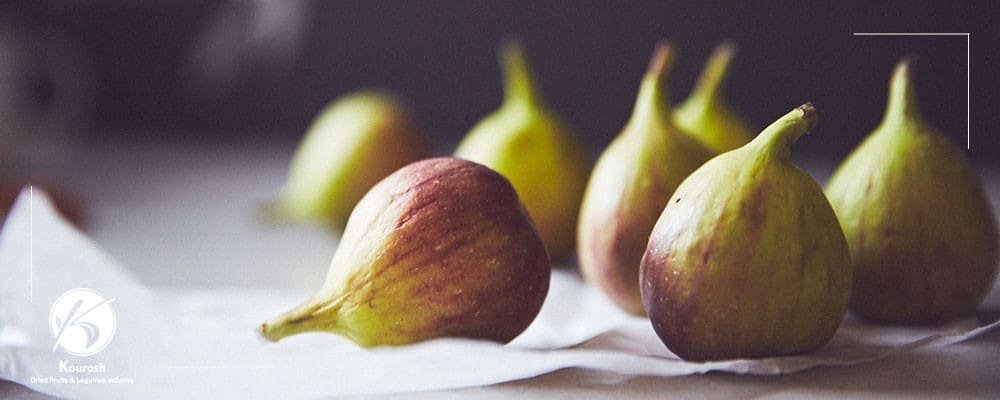
Storing fresh figs
Fresh figs are highly prone to decay and should be consumed within a few days after harvesting, usually between seven to ten days. For storing fresh figs purchased, be sure to put them in a single layer on a plate or bowl and store them in a refrigerator or pretty cool place. Wash the figs when consuming. Importantly, figs stored in the refrigerator will lose some of their flavors. When you purchased premature figs, you can keep them at room temperature for one to two days to soften them. If you purchased figs in massive quantities, eat them for 7 days, or if you wish to have them at the end of the season, you can practice the following techniques to store them for a long time.
Freezing fresh figs
Freezing is among the best ways to extend the shelf life of fresh figs. For freezing, 1.Wash them with cold water and remove the stems and figs. Then, dry the figs with a napkin. 2.Put the figs in a large tray at a distance and keep them in the freezer for 2 to 4 hours. 3.After this period, put the figs in an air-less plastic container and store them again in the freezer. By this technique, you can store figs in the freezer for up to 8 months. Before consumption, put the figs in the refrigerator to melt the ice.
Fresh fig compotes
With this technique, you can simply have a fig compote and enjoy its unique unseasonal taste.
1.Submerge the jars in boiling water to sterilize.
2.Wash fresh and healthy figs with cold water and remove the stems. Cook the figs in a large stockpot over low heat.
3.For having caramelized figs, add 6 to 8 cups of sugar and 1-gallon (4.4 liters of) water to figs. You need 1/2 of sugar for every cup of figs. Let the figs cook over low heat for 2 to 3 hours.
4.Pour the fig mixture into the jars and leave 1/2 inches above the jar empty. Seal the jars firmly to avoid the air from circulating between figs.
5.Put the glasses in boiling water for 30 minutes. After this duration, take the jars out of the boiling water and let them cool. The fig compote is recommended to be kept in the refrigerator.
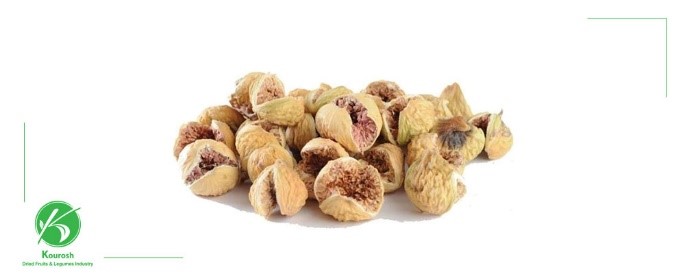
Drying figs at homeDried figs are a sweet and delicious snack. They retain all their properties and taste for a longer period. By drying, you can consume this valuable fruit all year round. Dried figs can be easily purchased from the store or prepared at home using one of the following techniques.
Drying figs under the sun
1.Wash the figs with cold water and dry them using a napkin. Cut the figs in half with a sharp blade. This lets the figs be dried faster.
2.Put the sliced figs on a mesh and cover with a thin cotton cloth. Make sure that the air should circulate over and underneath the figs. Putting figs on a tray will aid the activities of molds on figs. If you want to have dried figs without halving them, it is better to use wooden skewers and hang them on the strap. In both techniques, cover the figs with a cloth for easier drying and preventing insects from accessing to figs. In this technique, spread out the figs under the sun during the day to dry faster, as figs dry more delayed in the shade and are more prone to decay. And at night, keep them in the room so that the dew does not spoil them.
3.Blend them every day to dry evenly. After 2 to 3 days, the figs are dried under the sun. Figs with leathery exocarp and no moisture are ready to store for the long term.
4.Dried figs can be stored in a sealed container in the freezer for 6 months to 3 years.
Drying figs in the oven
1.Preheat the oven to 140 °F (60 °C). The oven temperature should be low to prevent figs from cooking. Wash the figs with cold water and remove the stems and dry them with a napkin.
2.Cut the figs in half. Divide larger figs into four slices. Put them on a metal wire rack on the middle floor of the oven. For full drying, figs must be put in the half-open oven for 36 hours. You can turn off the oven at periodic intervals, rotate the figs, and turn the oven on again to dry the figs evenly.
3.Allow the dried figs to cool fully before packing. Then, store them in the freezer. If you wish to obtain dried figs from the store, choose clean figs with a sweet aroma, as well as a shiny, crack-free exocarp (outer skin). Make sure that figs are not moldy, as they seldom are not dried thoroughly. Dried figs can be stored in a sealed plastic bag at room temperature for a month. To extend the shelf life of dried figs, they can be put in suitable containers and stored in the refrigerator. With this technique, dried figs can be stored for 6 months to one year. Open mouth dried figs should be put in sealed bags and then refrigerated. Read this article to know more about dried figs and acquire knowledge of the best dried figs
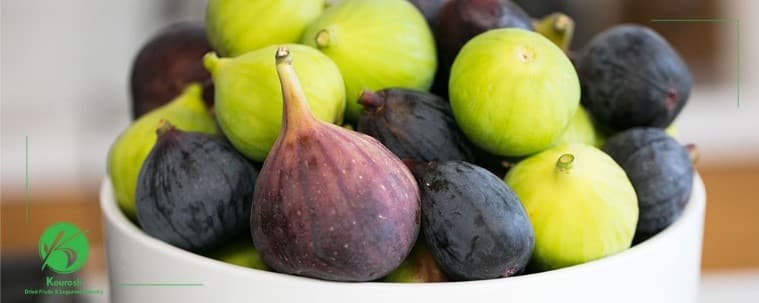
Which figs are the healthiest?
When talking about adding either fresh old dried fruits to the diet, it is always assumed that fresh fruits are healthier, but since the nutritional value of fresh and dried figs is the same, we cannot say exactly what kind is superior to the other. Interestingly, the nutritional value of fresh figs is 10 calories less than dried figs. With a larger amount of water, fresh figs fill more volume in the stomach and enhance the feeling of satiety. Dried figs have fewer carbohydrates and sugar than fresh figs. However, the glycemic index of fresh figs is lower than that of dried figs. Dried and fresh figs have the same quantity of fiber. Figs contain some vitamins and minerals, but it is better to use fresh figs to supply manganese, potassium, and magnesium required by the body. Fresh and dried figs are healthy and nutritious snacks, but dried figs should be consumed in controlled and balanced amounts.
Our products
We prepare dried figs using the best types of figs cultivated in Estahban (Fars Province, Iran) and drying them under sunlight without any additives. Estahban fig trees are wild and need no pesticide during growth and production. If you wish to buy dried figs, you can easily contact us or register your order by filling out the purchase form. Our consultants will talk to you at the earliest convenience and deliver you the product you order.

